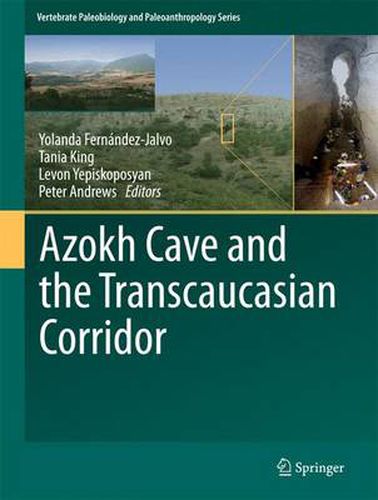Readings Newsletter
Become a Readings Member to make your shopping experience even easier.
Sign in or sign up for free!
You’re not far away from qualifying for FREE standard shipping within Australia
You’ve qualified for FREE standard shipping within Australia
The cart is loading…






This edited volume describes the geology, stratigraphy, anthropology, archaeology, dating, taphonomy, paleobotany, paleontology and paleoecology of Azokh caves (also known as Azykh or Azikh). The chapters review exhaustively the key recent research on this limestone karstic site, which is located near the village of the same name in the region of Nagorno Karabagh in the south-eastern end of the Lesser Caucasus. The site is significant due to its geographic location at an important migratory crossroad between Africa and Eurasia. These caves contain an almost complete sedimentary sequence of the transition between H.heidelbergensis and H. neanderthalensis continuing to later Pleistocene and Holocene stratified sediment. The site is also important due to the discovery of Neanderthal remains by the current research group in addition to the Middle Pleistocene hominin fossils during a previous phase of excavation work led by M. Huseinov. At the heart of this book is the matter of how this site relates to human evolution.
$9.00 standard shipping within Australia
FREE standard shipping within Australia for orders over $100.00
Express & International shipping calculated at checkout
This edited volume describes the geology, stratigraphy, anthropology, archaeology, dating, taphonomy, paleobotany, paleontology and paleoecology of Azokh caves (also known as Azykh or Azikh). The chapters review exhaustively the key recent research on this limestone karstic site, which is located near the village of the same name in the region of Nagorno Karabagh in the south-eastern end of the Lesser Caucasus. The site is significant due to its geographic location at an important migratory crossroad between Africa and Eurasia. These caves contain an almost complete sedimentary sequence of the transition between H.heidelbergensis and H. neanderthalensis continuing to later Pleistocene and Holocene stratified sediment. The site is also important due to the discovery of Neanderthal remains by the current research group in addition to the Middle Pleistocene hominin fossils during a previous phase of excavation work led by M. Huseinov. At the heart of this book is the matter of how this site relates to human evolution.